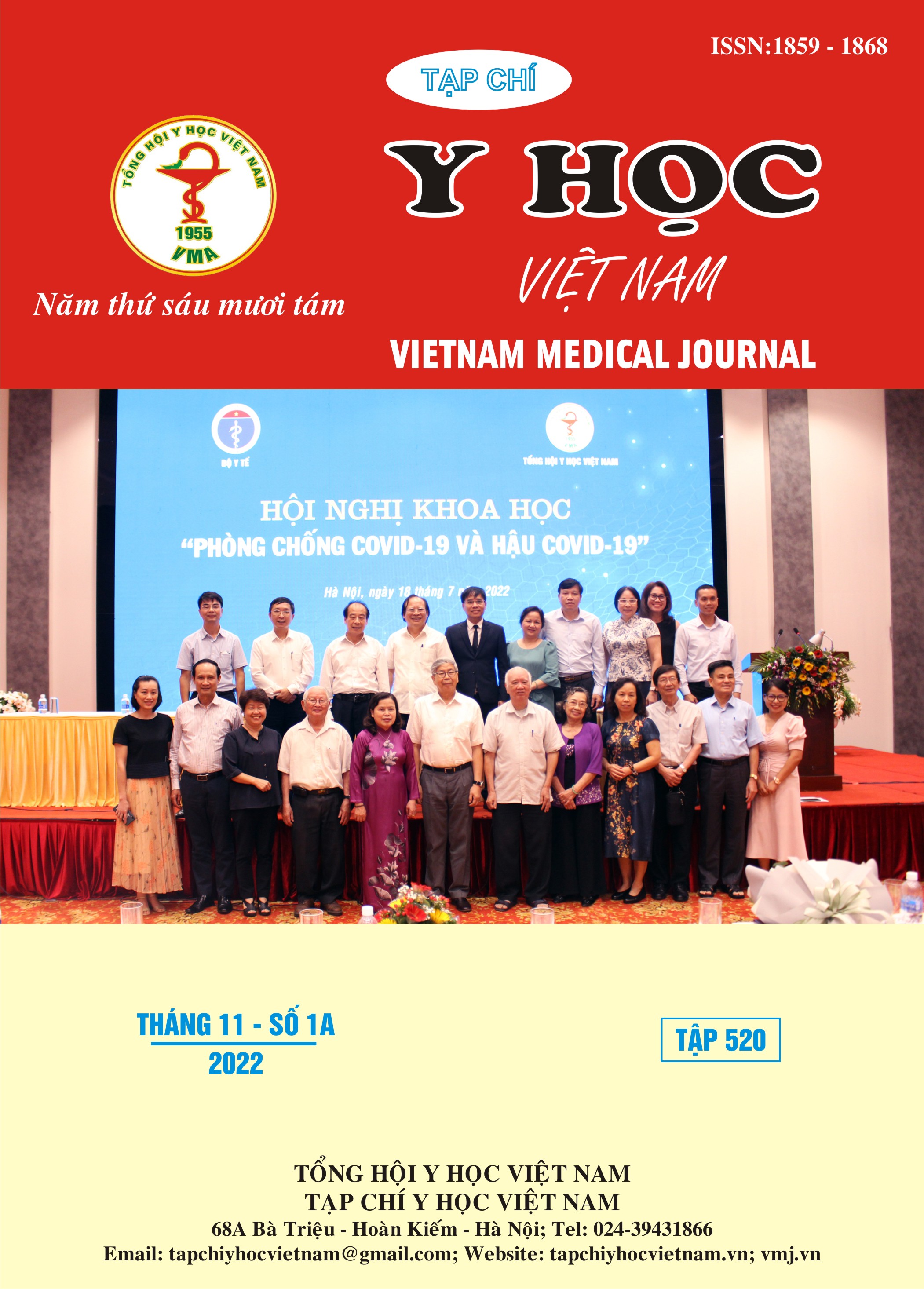VALUE OF MAGNETIC RESONANCE IMAGING 1.5 TESLA FOR DIAGNOSIS OF CERVICAL CANCER RECURRENT
Main Article Content
Abstract
Purpose: This study aims to evaluate value of magnetic resonance imaging 1.5 Tesla for diagnosis of cervical cancer recurrent. Material and Methods: The prospective study was conducted on 29 patients with 33 lesions at the National Cancer Hospital from August 2021 to August 2022. Results of magnetic resonance imaging (MRI) were compared with pathological results as the gold standard. Sensitivity, specificity, positive predictive value (PPV), negative predictive value (NPV), and accuracy were calculated for conventional MRI and combined conventional MRI and DWI. We evaluated the ADC and compared median ADC (mADC) of recurrent lesions and benign lesions. Results: The accuracy of diagnosing recurrent lesions was highest at combined conventional MRI and DWI (90,9%) than at conventional MRI (81,8%). Median ADC of recurrent lesions (0,95±0,14 x 10−3mm2/s) was significantly lower than benign lesions (1,34±0,20x10−3mm2/s) (p<0,01). Conclusion: Conventional MR with DWI significantly increases the diagnostic accuracy for suspected cervical cancer local recurrence. The statistically significant difference between the ADC of recurrent lesions and benign lesions suggests using ADC value as an invasive indicator in prognosis of cervical cancer recurrent.
Article Details
Keywords
cervical cancer, MRI, Diffusion weighted imaging
References
2. Management of Metastatic Cervical Cancer: Review of the Literature | Journal of Clinical Oncology. Accessed June 7, 2021. https://ascopubs.org/doi/10.1200/JCO.2006.09.3781
3. Sotto LSJ, Graham JB, Pickren JW. Postmortem findings in cancer of the cervix. Am J Obstet Gynecol. 1960;80(4):791-794. doi:10.1016/0002-9378(60)90591-3
4. Schieda N, Malone SC, Al Dandan O, Ramchandani P, Siegelman ES. Multi-modality organ-based approach to expected imaging findings, complications and recurrent tumour in the genitourinary tract after radiotherapy. Insights Imaging. 2014;5(1):25-40. doi:10.1007/s13244-013-0295-z
5. Chao X, Fan J, Song X, et al. Diagnostic Strategies for Recurrent Cervical Cancer: A Cohort Study. Front Oncol. 2020;10. doi:10.3389/fonc.2020.591253
6. Meads C, Davenport C, Małysiak S, et al. Evaluating PET-CT in the detection and management of recurrent cervical cancer: systematic reviews of diagnostic accuracy and subjective elicitation. BJOG Int J Obstet Gynaecol. 2014;121(4):398-407. doi:10.1111/1471-0528.12488
7. Liyanage SH, Roberts CA, Rockall AG. MRI and PET Scans for Primary Staging and Detection of Cervical Cancer Recurrence. Womens Health. 2010;6(2):251-269. doi:10.2217/WHE.10.7
8. Mahajan A, Engineer R, Chopra S, et al. Role of 3T multiparametric-MRI with BOLD hypoxia imaging for diagnosis and post therapy response evaluation of postoperative recurrent cervical cancers. Eur J Radiol Open. 2015;3:22-30. doi:10.1016/j.ejro.2015.11.003
9. Meads C, Davenport C, Małysiak S, et al. Evaluating PET-CT in the detection and management of recurrent cervical cancer: systematic reviews of diagnostic accuracy and subjective elicitation. BJOG Int J Obstet Gynaecol. 2014;121(4): 398-407. doi:10.1111/1471-0528.12488.


